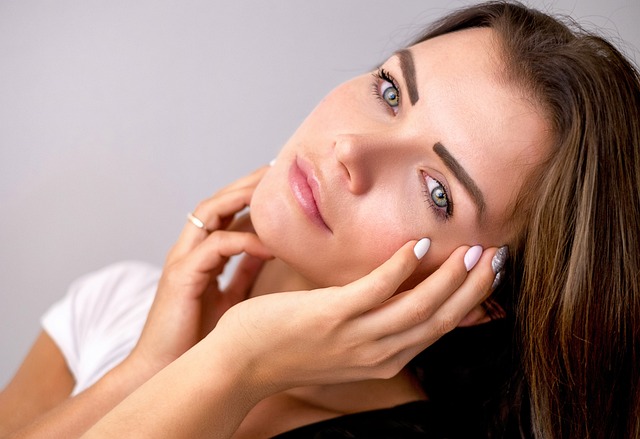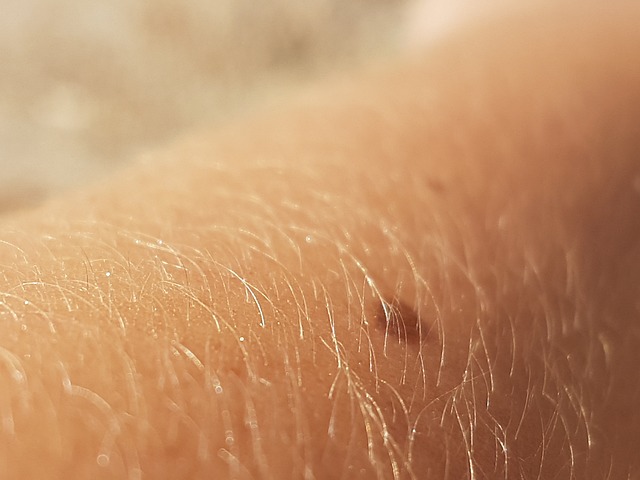RF Skin Resurfacing is a non-invasive skincare technology that uses radio waves to stimulate collagen production and remodel skin structure, reducing fine lines and wrinkles. Versatile and gentle, it offers faster recovery times than laser resurfacing. Ideal for individuals seeking minimal intervention solutions like acne scars, hyperpigmentation, or moderate to severe fine lines. Post-treatment, redness and sensitivity are common but temporary; proper care, including hydration, sun protection, and avoiding strenuous activities, is crucial for optimal healing. Performed by a qualified expert, RF Skin Resurfacing is generally safe with minimal side effects.
Skin Renewal Resurfacing using Radio Frequency (RF) technology is a revolutionary non-invasive procedure gaining popularity for its ability to rejuvenate and transform skin. This advanced treatment offers a comprehensive approach to skin care, addressing various concerns from fine lines and wrinkles to texture issues. In this article, we’ll explore RF Skin Resurfacing in depth, covering the science behind it, benefits, procedure details, safety aspects, and post-treatment care for optimal results.
Understanding RF Skin Resurfacing: Unlocking the Power of Radio Frequency

Radio Frequency (RF) Skin Resurfacing is a cutting-edge technology that has revolutionized skincare treatments. This non-invasive procedure harnesses the power of radio waves to stimulate collagen production and remodel the skin’s structure from within. By sending precise energy into the deeper layers of the dermis, RF Skin Resurfacing encourages the body’s natural healing process, resulting in improved skin texture, reduced fine lines and wrinkles, and a more youthful appearance.
The procedure is versatile and can be tailored to different skin concerns. It works by generating heat in the collagen and elastic fibres, causing them to contract and tighten. This process also promotes the growth of new, healthy skin cells, leading to a smoother, more even complexion. RF Skin Resurfacing is an effective alternative to laser resurfacing, offering a gentler approach with faster recovery times, making it an attractive option for those seeking a non-surgical solution for skin rejuvenation.
The Science Behind It: How RF Energy Works on the Skin

The science behind RF (Radio Frequency) skin resurfacing involves a unique interaction between electromagnetic waves and the skin’s structural components. When RF energy is applied to the skin, it penetrates into the deeper layers, stimulating collagen production and triggering a series of beneficial cellular responses. This technology heats the water content in the skin’s cells, causing them to contract and tighten, resulting in improved skin texture and a reduced appearance of fine lines and wrinkles.
RF Skin Resurfacing exploits the body’s natural healing mechanisms by promoting fibroblast activity, which are responsible for collagen synthesis. The controlled heat generated by RF energy also helps to break down and dissolve damaged skin cells, allowing new, healthier cells to take their place. This non-invasive procedure offers a safe and effective alternative to traditional resurfacing methods, providing long-lasting results with minimal downtime or side effects.
Benefits and Applications: Who is a Good Candidate?

Skin Renewal Resurfacing, specifically RF (Radio Frequency) Skin Resurfacing, offers a multitude of benefits for those seeking to enhance their skin’s appearance and texture. This non-invasive procedure is designed to stimulate collagen production, improve skin elasticity, and reduce fine lines and wrinkles. By targeting specific areas, it can provide a youthful glow and a smoother complexion.
The ideal candidates for RF Skin Resurfacing are individuals with moderate to severe skin concerns such as acne scars, hyperpigmentation, or fine lines who are looking for a minimally invasive solution. It is suitable for those with healthier skin who want to prevent signs of aging or maintain the results of previous skincare treatments. A consultation with a dermatologist is essential to determine if RF Resurfacing aligns with your specific goals and skin type.
Procedure Insights: What to Expect During and After Treatment

During an RF (Radio Frequency) Skin Resurfacing treatment, a device emits precise radio waves that heat the deeper layers of the skin, stimulating collagen production and promoting skin cell turnover. This non-invasive procedure is typically quick, with minimal discomfort, and can be tailored to address various skin concerns, including fine lines, wrinkles, and uneven skin texture. After the treatment, patients often experience a slight redness and sensitivity, which usually subside within a few hours. The skin may feel tighter and look brighter immediately afterward, but significant results become more apparent over the following weeks as collagen continues to form and rejuvenate the skin’s surface.
In the days following RF Skin Resurfacing, it’s essential to maintain proper skincare hygiene, using gentle cleansers and avoiding harsh products that could irritate the treated area. Sun protection is crucial; patients are advised to apply sunscreen regularly and limit sun exposure until the skin has fully healed. Most individuals can resume their normal activities within a day or two, but strenuous exercises and certain cosmetic procedures should be avoided for a period recommended by your dermatologist to ensure optimal healing and minimize potential complications.
Safety and Side Effects: Addressing Common Concerns

Skin renewal resurfacing, especially with Radio Frequency (RF) Skin Resurfacing, is a popular procedure for achieving smoother, younger-looking skin. However, like any medical treatment, it’s natural to have concerns about safety and potential side effects. It’s important to understand that RF Skin Resurfacing is generally considered safe when performed by a qualified professional using appropriate settings. The most common side effects are temporary redness, swelling, and mild discomfort in the treated area, which usually subside within a few days.
While rare, some individuals may experience more severe reactions such as infection or pigment changes. To mitigate these risks, it’s crucial to choose an experienced practitioner who follows strict hygiene protocols and provides post-treatment care instructions. Regular follow-up appointments also help in monitoring the healing process and addressing any concerns promptly.
Topical Care and Post-Treatment Maintenance Tips

After a successful RF Skin Resurfacing treatment, proper topical care and post-treatment maintenance are essential to optimize results and ensure skin health. It’s crucial to use gentle, hydrating skincare products suitable for sensitive skin. Avoid harsh cleansers, exfoliants, or retinol products immediately after the procedure as these can irritate the treated area. Opt for mild, pH-balanced cleaners and moisturizers to support your skin’s natural healing process.
Additionally, sun protection is vital. Always apply a broad-spectrum sunscreen with an SPF of 30 or higher daily, reapplying every two hours when outdoors. This helps prevent hyperpigmentation and promotes even skin tone. Stay hydrated by drinking plenty of water and avoid excessive alcohol consumption and smoking, as these habits can hinder the skin’s ability to heal and regenerate. Gentle facial massage techniques can also aid in lymphatic drainage and promote circulation, enhancing the overall health of your skin.
